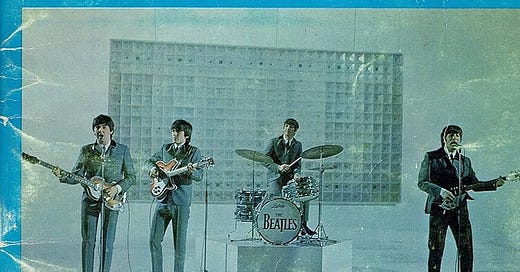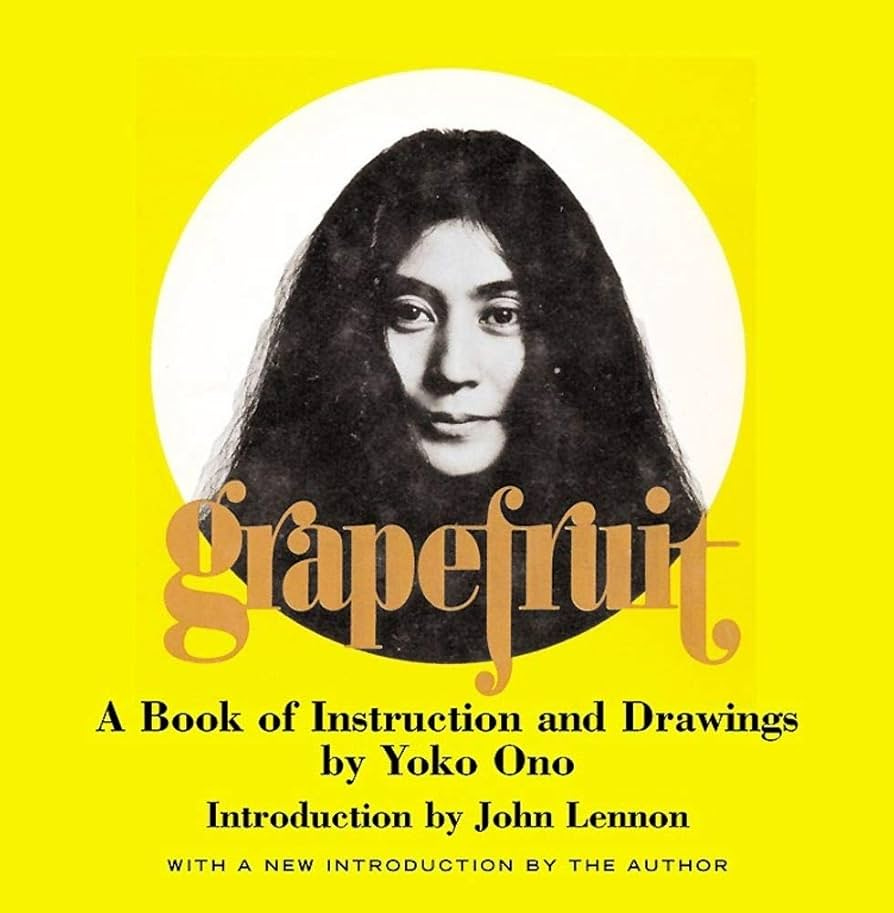When it comes to books about the Beatles phenomenon, you might say I've been here, there and everywhere. But today, I'm looking at two fascinating publications from 1964 that couldn't be more different if they tried: "The Beatles Souvenir Film and Song Album for A Hard Day's Night" and Yoko Ono's "Grapefruit." One's a straightforward celebration of the Fab Four at their commercial peak, while the other... well, that's quite another story altogether, isn't it?
The Hard Day's Night Songbook: A Slice of Beatlemania
Let's start with the more conventional of the two. Published by Northern Songs Ltd. in London, this 36-page treasure with its colour card covers was every young fan's dream, priced at 10 shillings (that's 50p in today's money, though you'd be lucky to find a copy for under £200 now). Dick James, our publisher at the time, wrote the introduction - a proper gentleman who helped us navigate the mad world of music publishing in those early days.
The book is beautifully laid out, with 15 full-page photographs capturing us lads in our prime, along with the sheet music for nine songs including "A Hard Day's Night," "If I Fell," and "Can't Buy Me Love." It's a proper time capsule, that one - just looking at it takes me back to those hectic days filming with Richard Lester, running from screaming fans, and trying to squeeze in recording sessions between takes.
At the time, it received glowing reviews in the music press, with Melody Maker calling it "essential reading for any serious Beatles fan." It served its purpose brilliantly - giving fans both a souvenir of the film and the means to play our songs at home. The photography captured the energy and excitement of that period perfectly, though I must say some of us look frightfully young!
Grapefruit: A Journey into the Avant-Garde
Now, onto something completely different. Yoko's "Grapefruit," published the same year by Wunternaum Press in Tokyo, is what we might call a different kettle of fish entirely. Limited to just 500 copies and priced at $6 (about £2.50 then), it's now considered a seminal piece of conceptual art.
The book's history is fascinating - it emerged from the avant-garde scene that most of us Beatles were yet to discover. While we were singing "yeah, yeah, yeah," Yoko was writing instructions like "Listen to the sound of the earth turning." Different strokes for different folks, as they say!
Initial reviews were mixed, with many critics scratching their heads. The art world eventually caught up though, and by the time of its 1970 reissue (with John's introduction), it was recognized as a groundbreaking work of conceptual art. The Simon & Schuster edition brought it to a wider audience, though some might say it lost a bit of its original punch.
A Personal Take
Looking at these books side by side, they tell an incredible story about the different worlds existing in 1964. Our songbook represents the commercial peak of Beatlemania - all matching suits and moptops, while "Grapefruit" hints at the artistic experimentation that would later influence the band's more experimental period.
The Hard Day's Night book does exactly what it says on the tin - it's a straightforward, well-produced piece of memorabilia that captures a moment in time. It's like a well-crafted pop song - nothing more, nothing less, but sometimes that's exactly what you want.
"Grapefruit," on the other hand, is more like "Revolution 9" - challenging, experimental, and not for everyone. But its influence on the art world (and eventually on John's songwriting - just listen to "Imagine") can't be denied. It's the kind of book that makes you think, even if you're not quite sure what you're thinking about!
The Verdict
If I had to choose between them? Well, it's like comparing "Yesterday" to "Tomorrow Never Knows" - they're both brilliant in their own way. The songbook is a perfect snapshot of who we were in 1964, while "Grapefruit" points toward where some of us would go. The songbook might be more accessible, but "Grapefruit" has had a more lasting impact on art and culture.
For pure nostalgia and musical value, you can't beat the Hard Day's Night songbook. But for artistic importance and lasting influence, "Grapefruit" takes the prize. It's the one that keeps giving new insights with each reading, even if some of those insights might leave you wondering whether you should listen to the sound of snow falling while reading the sheet music for "Can't Buy Me Love."
In the end, both books say something important about 1964 - a year when pop music and avant-garde art were about to collide in ways nobody could have predicted. And wasn't that just a splendid time for a song?





